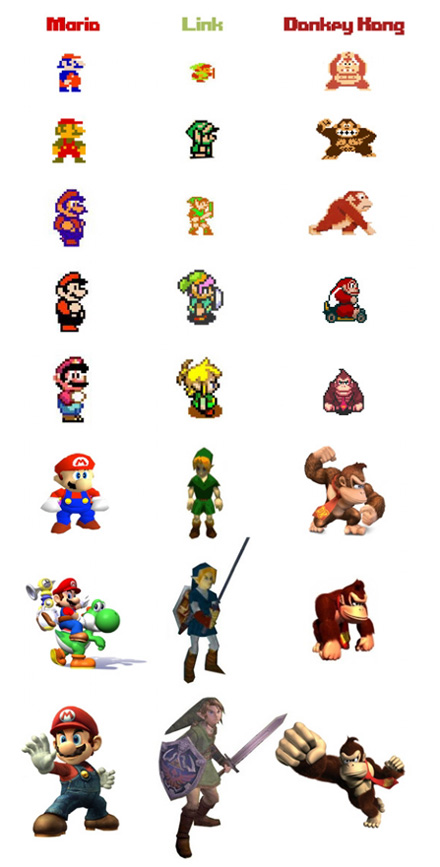Evolution and Ontogeny of Game Characters
Over time, even game characters evolve.
The change in these Nintendo characters since their birth display the universal sequence we see in evolution and biological development. Organisms go from general indistinctness to ever greater and sharper distinctness.

We can read these shifts in Mario, Link and Donkey Kong as if they occurred in real organisms. A similar pattern occurs both in an individual as it grows from embryo to adult, and in life as a whole as species evolve from generalized organism to specialized one. This parallel pattern is sometimes known as recapitulation theory. In short form it says “ontogeny recapitulates phylogeny.” In other words the development of the individual embryo (ontogeny) rehearses the development of the species (phylogeny). For instance, in embryo humans have gill structures which suggests that in embryo humans replay our earlier evolutionary past “fish” form. Scientifically, this is an exaggeration, and very few organisms actually recapitulate their evolution, but in broad soft strokes there is a truth to it.
The general trend in evolution is to move from generalization to specialization. From simple structure to complex. And from indistinct to distinct. That movement is seen very clearly in this timeline of Nintendo characters. They start out as embryonic balls, with generalized parts. An eye is a single pixel to begin with. Later on it becomes multi-pixeled, and later each pixel is doing something different — different color and function. Hands move from a few general indistinct pixels to more complex forms with specialized parts — fingers, wrists, etc.
It is not hard to forecast the next steps in this evo-devo. More specialization, sharper distinctions, additional complexity.
Image found on Kontraband

